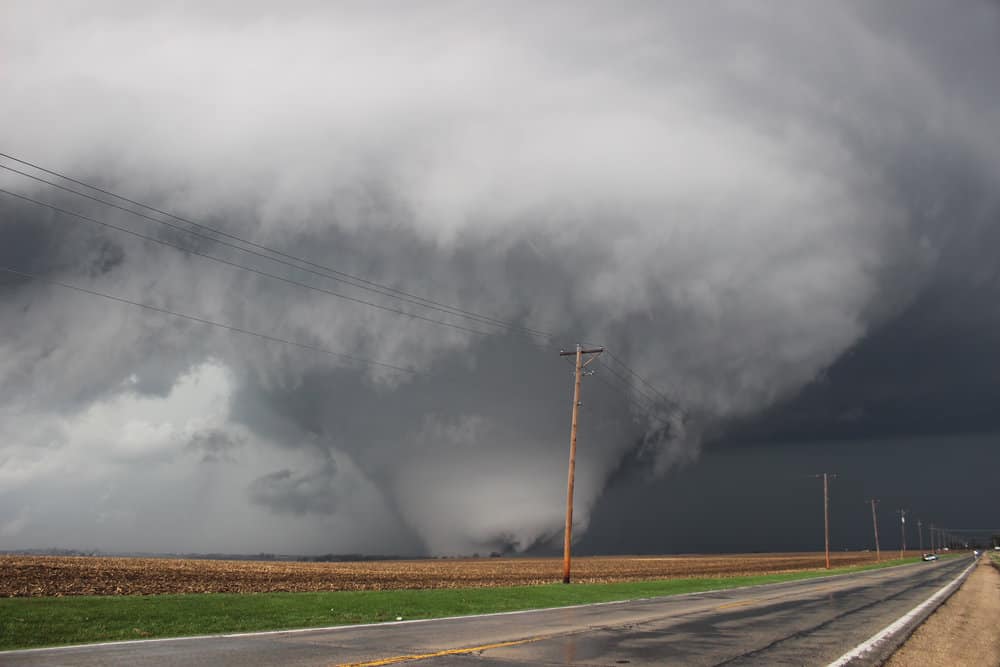
Spring is in the air, and this means severe thunderstorms are becoming a way of life for most people in the southeastern U.S. So far in 2019, 306 tornadoes have been reported across the country, most of them hitting areas east of the Mississippi River. Tornadoes have killed 27 people to date in 2019, most of them in Beauregard, Alabama on March 3 when an EF4 devastated the small town, and tornadoes have also been confirmed in other southeastern states such as Georgia, Florida, Louisiana and Mississippi.
A new study suggests that since the late 1970s, the Midwest and Southeast have increasingly been targets for tornadoes. The researchers also found that during the same time period, tornado activity has decreased in portions of the central and southern Great Plains – parts of Texas, Oklahoma and northeastern Colorado – the region traditionally called “Tornado Alley.”
Although Tornado Alley remains the top zone for tornadoes in the United States, other areas, including the so-called “Dixie Alley” that includes much of the lower Mississippi Valley region, have been catching up. The researchers identified significant increasing tornado frequency in portions of Alabama, Arkansas, Illinois, Indiana, Kentucky, Mississippi, Missouri and Tennessee.
Victor Gensini is a meteorology professor at Northern Illinois University and the lead author of the study, published October 17, 2018 in the peer-reviewed journal Climate and Atmospheric Science. Gensini said the following in a statement the day the study was published:
“Regions in the Southeast and Midwest are closing the gap when it comes to the number of tornado reports. It’s not that Texas and Oklahoma do not get tornadoes. They’re still the number one location in terms of tornado frequency, but the trend in many locations is down over the past 40 years.”

The researchers tracked the number of tornado reports from 1979 to 2017, while also investigating regional trends in the daily frequency of tornado-environment formation over the same time period, using an index known as the Significant Tornado Parameter (STP). STP is often used for predicting severe weather, and the index captures the coexistence of atmospheric factors favorable for producing tornadoes. Both the number of actual tornado reports and the historical STP analysis showed the eastward upswing in tornado frequency.
“One could argue that because a region’s population has increased, more tornadoes are sighted and reported,” Gensini said. “But we also identified this eastward trend when using the STP index, which looks at the frequency of tornado environments and has nothing to do with people. This increases our confidence in the reporting trend that we’re seeing.”
Read more about how the researchers conducted the study here.
The trend is important to understand the potential for future tornado exposure, damage and casualties. Severe thunderstorms that are accompanied by tornadoes, hail and damaging winds cause an average of $5.4 billion in damage each year across the U.S., and events with $10 billion or more in damages are no longer uncommon.
Previous research has identified the southeastern U.S. as particularly vulnerable to tornadoes because of factors such as longer and larger tornado paths, expanding population density, mobile-home density and higher nighttime tornado probabilities. Most tornado fatalities in the U.S. occur in the Southeast, particularly the mid-South region. While tornadoes can happen in all 50 states, if more tornadoes are happening in your area, you’re more susceptible to one of these disasters. This could be taken into consideration when adopting building codes, identifying potentially impacted community assets, creating awareness and making emergency preparations.
The researchers cannot say for sure whether the shift eastward in tornado events might be caused by natural or human-induced climate change, but Gensini said “Clearly, there is a climate change signal here. What’s causing the change is still an open question.” Bottom line – the study has indicated a noteworthy shift of tornado activity into areas east of the Mississippi River. People should take it seriously and always be prepared for the possibility that their neighborhood could be in the path of the next violent tornado. Shippers, carriers and brokers should take it seriously for the safety of their drivers and minimizing costly delays in freight movement. While tornado outbreaks don’t typically have long-term effects on supply chains across large areas, they can cause minor to moderate delays in the short-term.







